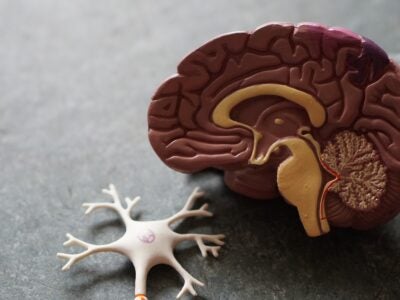The Football Players Health Study
Launched in 2014, the Football Players Health Study is a comprehensive research program at Harvard University dedicated to addressing the health and wellbeing of former NFL players. It is the largest study ever conducted of living former players. Harnessing the expertise of the University’s faculty and researchers across interdisciplinary domains, including neurology, sports medicine, rehabilitation medicine, public health, cardiology, and more, the Study is the first to advance our knowledge of the inter-dependency of the multiple, and often interrelated, conditions that former players face.
St. Louis Baby Teeth Study
Harvard researchers studying how early-life exposures are relevant to lifelong health will examine baby teeth left over from the famous Baby Tooth Survey in St. Louis, a Cold War-era study that measured radioactive fallout in about 320,000 donated teeth.
MEAD: Metal Exposure and Alzheimer’s Disease
We propose to study cumulative lead exposure via a combination of techniques that are more convenient than traditional K-shell X-ray Fluorescence (KXRF) and that will give us more in-depth longitudinal lead exposure information than the KXRF scanner: a novel portable X-ray fluorescence method (LXRF instrument) and laminar analysis of lead in tooth enamel and dentine (which can give temporally detailed lead exposure information from childhood through young adulthood). We will pair these exposure measurements with participants’ medical history and demographic data to explore the relationship of metals exposure to neurodegenerative dementia.
Pre-disease biomarkers of persistent organic pollutants, immune system, and amyotrophic lateral sclerosis
This study will assess whether plasma levels of persistent organic pollutants (POPs) (such as organochlorine pesticides (OCPs), polychlorinated biphenyls (PCBs), and polybrominated diphenyl ethers (PBDEs)), in prospectively collected samples predicts the risk of ALS. In addition, the prospectively collected plasma will allow us to analyze extracellular vesicles (EVs) to examine whether differences in immune specific EVs prospectively predict ALS. Effects on immune cells, as reflected by changes in EVs derived from immune cells, could be a means by which environmental exposures affect risk of ALS. Immune system changes in ALS patients have been documented, but no study has examined whether such changes occur prior to ALS onset to determine if such changes are likely to be a cause or consequence of ALS. The proposed investigation will take advantage of 4 unique populations comprising over 60,000 Finnish men and women who provided blood samples as part of their participation in the Finnish Mobile Health Clinic cohort (FMC), part of the follow-up stage of the FMC (FMCF), and the Min-Finland cohort (MFS). Our colleagues will identify ALS cases that developed in this cohort via linkage with the Finnish National Hospital Register.
The CreATe Consortium: Phenotype, Genotype and Biomarkers in ALS and Related Disorders
The PGB in ALS protocol aims to (a) elucidate the phenotypic correlates of genotype; (b) discern the genetic contributions to phenotype; and (c) develop and validate biomarkers of relevance to therapeutic development for ALS and related disorders. The research team based at the University of Miami will collect data on environmental exposures to incorporate with detailed data on genes and clinical aspects of ALS in CReATe on about 700 patients with ALS. Questionnaires will be used to determine occupation history, details of military service (where applicable), medication use, tobacco use, alcohol consumption, diet, caffeine intake, home pesticide use, physical activity, trauma and injury, and residence history. This information will be collected for periods before and after ALS symptoms began. The Harvard team, led by Dr. Marc Weisskopf, will analyze these survey results. For the second phase of the study, the Harvard team is developing an environmental exposure questionnaire.
keywords: Environmental Neuroepidemiology; ADHD; Alzheimer’s disease; amyotrophic lateral sclerosis; autism; cognitive function; epidemiological methods; mental health; Parkinson’s disease






